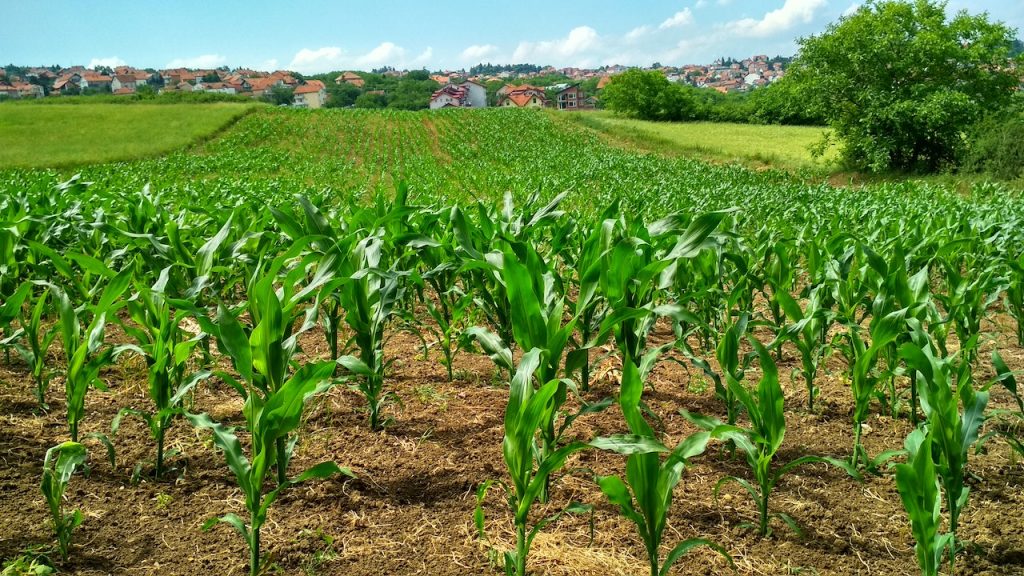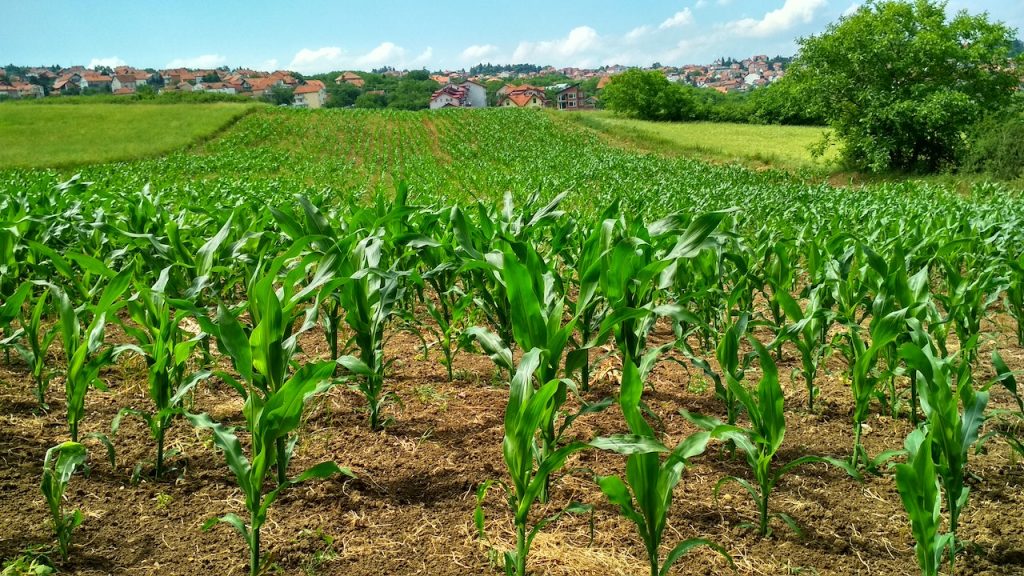Agriculture plays a vital role in the economy, serving as a major source of food, employment, and revenue. The success and stability of the agricultural sector are crucial for overall economic growth. However, farmers face various risks, including natural disasters, pests, and diseases, which can lead to crop losses and financial instability. To mitigate these risks, crop insurance serves as a valuable tool for farmers. This article aims to provide an overview of the concept of crop insurance and its significance in agriculture.

Understanding Crop Insurance
Crop insurance is a risk management tool designed to protect farmers against potential losses in crop production and revenue. It operates by providing financial compensation to farmers who experience crop failure or significant yield reductions due to covered causes. The insurance policies are typically offered by private insurance companies in collaboration with government-supported programs.
There are different types of crop insurance policies available to farmers. Yield-based insurance policies compensate farmers based on the actual yield loss compared to their expected yield. Revenue-based insurance, on the other hand, provides coverage based on the difference between the expected revenue and the actual revenue generated from the crop.
Additionally, governments often play a role in supporting these types of insurance programs. They may provide subsidies to farmers, reduce premium costs, or establish reinsurance mechanisms to encourage the availability and affordability of crop insurance.
Benefits of Crop Insurance
This insurance offers several benefits to farmers and the agricultural industry as a whole:
A. Financial Protection: This insurance provides a safety net for farmers by offering financial protection against crop losses caused by natural disasters such as droughts, floods, storms, or other unforeseen events. It also covers losses due to pests and diseases, helping farmers recover from unexpected setbacks.
B. Stability in Income and Cash Flow: By mitigating the risks associated with crop failures, insurance ensures a more stable income and cash flow for farmers. This stability enables them to cover operational costs, invest in new technologies and equipment, and make informed decisions regarding crop planning and expansion.
C. Access to Credit and Loans: Crop insurance plays a vital role in facilitating farmers’ access to credit and loans. Lenders consider this insurance coverage as collateral, reducing the risk associated with lending to agricultural businesses. This increased access to credit enables farmers to invest in their operations, enhance productivity, and foster agricultural growth.

Factors to Consider When Choosing Crop Insurance
When selecting crop insurance, farmers should take into account the following factors:
A. Evaluation of Individual Risk Factors: Farmers need to assess the specific risk factors that affect their crops, such as weather patterns, geographical location, and prevalent pests or diseases. Understanding these factors helps determine the appropriate coverage needed to protect against potential losses.
B. Determining the Appropriate Coverage Level: The level of coverage should be determined based on factors like the size of the farm and the available budget. Farmers need to strike a balance between comprehensive coverage and affordability to ensure adequate protection without straining their financial resources.
C. Comparing Premiums, Deductibles, and Coverage Options: It’s essential to compare insurance premiums, deductibles, and coverage options offered by different insurance providers. Farmers should evaluate the cost-effectiveness of each policy and consider the specific risks they face to make an informed decision.
Crop Insurance Claims Process
In the event of crop losses, farmers must follow the crop insurance claims process:
A. Reporting Crop Losses: Farmers should promptly report their crop losses to the insurance provider as soon as they occur. Timely reporting is crucial for initiating the claims process and ensuring that the losses are documented accurately.
B. Documentation Requirements: Farmers will need to provide the necessary documentation to support their claims, such as production records, sales receipts, and evidence of the cause of loss. Compliance with the documentation requirements is essential for the successful processing of the claim.
C. Adjusters’ Role: Insurance adjusters play a crucial role in assessing the damage and determining the claim amount. They visit the affected farms, evaluate the extent of the losses, and calculate the compensation based on the policy terms and conditions.
Government Support for Crop Insurance
The government plays a significant role in supporting crop insurance programs:
A. Government Subsidies and Premium Support: Governments often provide subsidies to reduce the cost of crop insurance premiums, making it more affordable for farmers. This support aims to encourage wider participation in insurance programs and promote risk management in the agricultural sector.
B. Federal and State Government Involvement: Both federal and state governments are actively involved in providing risk management tools for farmers. They establish policies, regulations, and guidelines to ensure the availability and effectiveness of crop insurance programs. This involvement helps create a stable agricultural environment and supports farmers in managing risks.
C. Public-Private Partnerships: Public-private partnerships are crucial in delivering effective crop insurance programs. Collaboration between government agencies and private insurance companies allows for the pooling of resources, expertise, and risk-sharing, resulting in more robust and comprehensive insurance options for farmers.
Challenges and Limitations of Crop Insurance
Crop insurance faces certain challenges and limitations that need to be acknowledged:
A. Affordability Issues: Small-scale and low-income farmers often struggle with the affordability of crop insurance premiums. The cost of coverage may be prohibitive for these farmers, making it difficult for them to access the financial protection provided by insurance.
B. Limited Coverage Options: Some crops or regions may have limited coverage options available. Certain crops with higher risk profiles or regions prone to specific perils may not have adequate insurance products tailored to their needs. This limitation poses challenges for farmers in these areas to secure comprehensive coverage.
C. Need for Continuous Improvement: Crop insurance programs need to continuously evolve and improve to keep up with changing agricultural practices and the impacts of climate change. As farming techniques and risk factors shift, insurance policies should be adaptable to address emerging challenges effectively.
Emerging Trends in Crop Insurance
The field of crop insurance is witnessing several emerging trends that can enhance its effectiveness:
A. Integration of Technology: Technological advancements, such as satellite imagery and drones, are being incorporated into crop insurance processes. These technologies enable accurate risk assessment, allowing insurance providers to better evaluate potential losses and streamline claims processing.
B. Customized Insurance Products: Precision agriculture and data analytics are being leveraged to develop customized insurance products. These tailored policies consider specific farm characteristics, historical data, and real-time information to provide farmers with more personalized coverage and risk management solutions.
C. Expansion of Parametric Insurance Models: Parametric insurance models, which determine payouts based on pre-defined parameters rather than actual losses, are gaining popularity. These models are particularly useful in covering specific risks like drought or excessive rainfall. By simplifying claims processing and reducing administrative costs, parametric insurance offers efficient coverage for farmers.
Conclusion
In conclusion, crop insurance plays a crucial role in mitigating risks for farmers and agricultural businesses. However, it faces challenges such as affordability issues for small-scale farmers and limited coverage options for specific crops or regions. To overcome these challenges, emerging trends in crop insurance are focused on integrating technology, developing customized insurance products, and expanding parametric insurance models.
Farmers are encouraged to explore suitable crop insurance options that align with their needs and risk profiles. By investing in crop insurance, farmers can safeguard their livelihoods and ensure financial stability in the face of unforeseen events.
Policymakers are called upon to provide continued support and enhancement of crop insurance programs. This includes addressing affordability concerns, expanding coverage options, and fostering innovation within the sector. With sustained support, crop insurance can contribute to a resilient and thriving agricultural industry.
